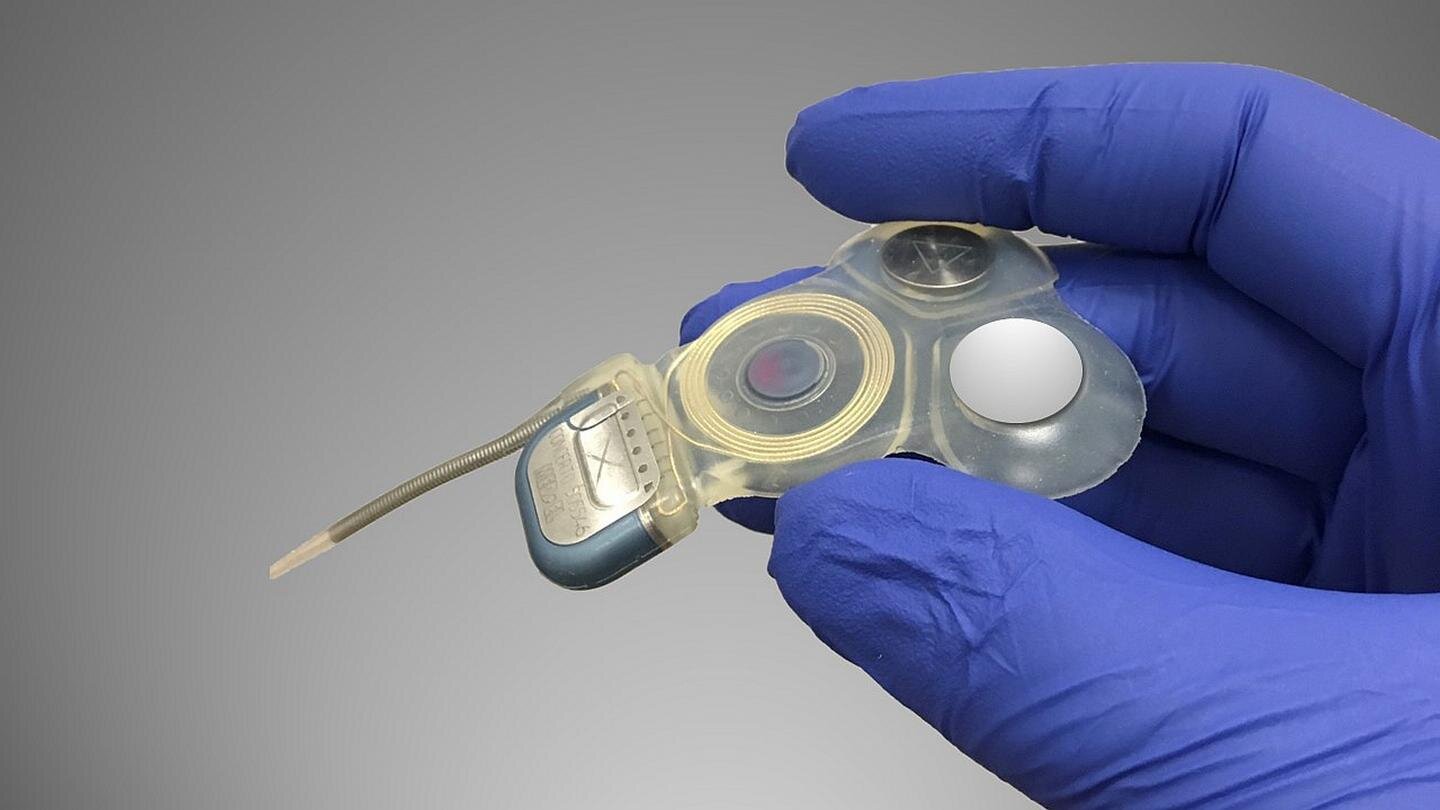

Getting around without the need to concentrate on every step is something most of us can take for granted because our inner ears drive reflexes that make maintaining balance automatically. However, for about 1.8 million adults worldwide with bilateral vestibular hypofunction (BVH)—loss of the inner ears’ sense of balance—walking requires constant attention to avoid a fall. Now, Johns Hopkins Medicine researchers have shown that they can facilitate walking, relieve dizziness and improve quality of life in patients with BVH by surgically implanting a stimulator that electrically bypasses malfunctioning areas of the inner ear and partially restores the sensation of balance.
To maintain balance while moving through the world around us, our brains receive and process data from multiple sensory systems, including vision, proprioception (muscles and joints) and vestibular sensation from the inner ears. People with BVH have difficulty keeping their eyes, head and body steady. Head movements make their vision jump and blur, and walking requires conscious effort. Forced to deal with this mental distraction, individuals with BVH suffer a more than thirtyfold increase in fall risk and the social stigma of appearing to walk like someone who’s intoxicated.
Current therapy for BVH is limited to vestibular rehabilitation exercises. Doctors advise their patients with BVH to avoid medications that damage the inner ear (ototoxic drugs) or suppress brain function (sedatives) and caution them to steer clear of activities that might endanger them or others, such as driving, swimming and walking in poorly lit areas.
“Although about 20 individuals had been implanted elsewhere with devices used to stimulate the vestibular nerve in a laboratory setting, participants in this trial are true pioneers—the first to use a vestibular implant as a long-term, 24-hour-per-day sensory restoration treatment,” says senior study author Charley Della Santina, M.D., Ph.D., professor of otolaryngology-head and neck surgery and biomedical engineering at the Johns Hopkins University School of Medicine and director of the Johns Hopkins Vestibular NeuroEngineering Laboratory, which conducted the study.
To achieve this milestone, Della Santina and his colleagues used basic research and engineering technology to modify a cochlear implant—a device that improves hearing loss by electrically stimulating the inner ear’s cochlear nerve—to instead activate the nearby vestibular nerve in response to signals from a motion sensor on the patient’s head. Electrical pulse strength and timing convey information about the speed and direction of the patient’s head motion which, in turn, drives head and eye reflexes that help maintain clearer vision during head movement and reduce the need to exert conscious effort to avoid falls.
In their study, the Johns Hopkins Medicine researchers evaluated eight patients with BVH who received the vestibular implant, assessing changes in postural stability, walking, hearing and patient-reported outcomes, including dizziness and quality of life. Assessments were conducted before implantation surgery (the baseline measure) and at six months and one year afterward. Median scores improved for the group on four of the five posture and gait metrics, and on three of the four patient-reported outcomes.
All eight patients experienced some hearing loss in the implanted ear. Five maintained hearing in the implanted ear sufficient to use a telephone without a hearing aid, and three experienced greater hearing loss.
“Improvement in performance on standardized clinical tests of balance and walking has been remarkable,” says Margaret Chow, study lead author and biomedical engineering doctoral candidate at The Johns Hopkins University. “Even more gratifying is that our patients have been able to return to activities that enrich their daily lives, such as exercising, riding a bike, gardening or dancing at a daughter’s wedding.”
Overall, the improvement in the quality of life and relief from the misery of BVH has been life-altering, says A’ndrea Messer, Ph.D., one of the patients chronicled in the Johns Hopkins Medicine study and a senior science and research information officer at Penn State University.
“The multichannel vestibular implant is incredible,” says Messer. “Before receiving it, I couldn’t walk in the dark, on uneven ground or without a cane. Now, I can do all of those things and am living a fairly normal life.”
more recommended stories
 ChatGPT Excels in Medical Summaries, Lacks Field-Specific Relevance
ChatGPT Excels in Medical Summaries, Lacks Field-Specific RelevanceIn a recent study published in.
 Study finds automated decision minimizes high-risk medicine combinations in ICU patients
Study finds automated decision minimizes high-risk medicine combinations in ICU patientsA multicenter study coordinated by Amsterdam.
 Study Discovers Connection Between Omicron Infection and Brain Structure Changes in Men
Study Discovers Connection Between Omicron Infection and Brain Structure Changes in MenA recent study in the JAMA.
 Advancing COPD Prognosis: Deep Learning Models
Advancing COPD Prognosis: Deep Learning ModelsResearchers conducted a meta-analysis in a.
 4 in 1 Test for Swine Flu, COVID-19, RSV, and Influenza
4 in 1 Test for Swine Flu, COVID-19, RSV, and InfluenzaIn the United Kingdom, the first.
 Innovative Zika Virus Defense: Needle-Free Vaccine Patch
Innovative Zika Virus Defense: Needle-Free Vaccine PatchTo protect individuals from the potentially.
 Social Media Impact on Mental Health Treatment
Social Media Impact on Mental Health TreatmentAccording to research, social media might.
 Unveiling the Impact of Whole Grain Consumption on Slowing Memory Decline in Black Populations
Unveiling the Impact of Whole Grain Consumption on Slowing Memory Decline in Black PopulationsConsuming a diet rich in whole.
 $1 Cancer Treatment: Engineered Bacteria Breakthrough
$1 Cancer Treatment: Engineered Bacteria BreakthroughWhat if a single one-dollar dose.
 Pfizer COVID Booster: Half-Dose, Reduced Side Effects
Pfizer COVID Booster: Half-Dose, Reduced Side EffectsIn a recent report in The.

Leave a Comment